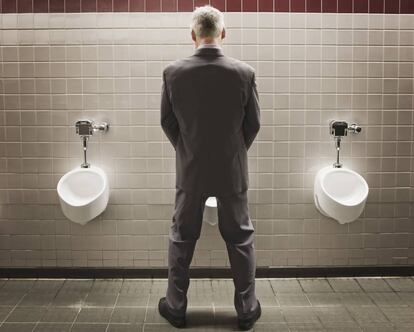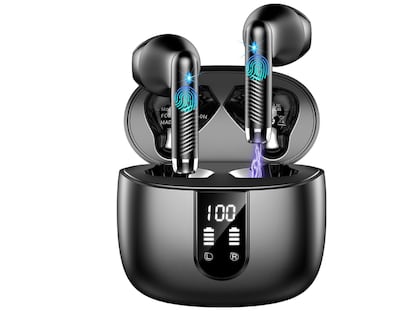Eight ways that you can improve your bladder control
The problem of urinary incontinence affects around 25 million Americans, but these issues can often be fixed by making some simple lifestyle changes

Our bladder is a vital part of our body but we rarely think about it until it gives us trouble. Frequent urination, urine leakage and the constant feeling of needing “to go” can be both uncomfortable and embarrassing.
Many of these issues stem from urinary incontinence, a problem that affects about 25 million Americans – 75% of whom are women and 25% men.
The good news is there are simple lifestyle changes you can make to train your bladder. But first, let’s look at the different kinds of incontinence:
Overflow incontinence increases the chance of a bladder infection
Stress incontinence
This type of incontinence occurs mainly in women as a result of a stretched or weakened pelvic floor due to childbirth. Symptoms include leakage whenever there is pressure or stress on the bladder, such as when laughing or coughing. Men typically do not experience this type of incontinence unless they’ve had an injury or had their prostate removed.
Overactive bladder
People who have an overactive bladder or urge incontinence feel the need to rush quickly to the bathroom due to strong overactive contractions in the bladder. They have to deal with a frequent urge to urinate or have excessively frequent urination. This condition can be caused by an enlarged prostate in men, changes to the bladder lining or bladder muscle in postmenopausal women, and chronic neurological conditions such as multiple sclerosis.
Overflow incontinence
If the bladder is not emptying completely, then there is no room for additional urine. This could be the result of a blockage, a neurological disorder or the side effect of medication. Men with an enlarged prostate are prone to overflow incontinence. The symptoms of this condition include frequent leakage or a feeling of lower-belly fullness. It also increases the chance of a bladder infection since the urine stays in the bladder for longer periods of time.
What can be done?
Depending on the cause of the problem, there are different ways to regain bladder control. You can try to do this naturally but if this fails, then drugs or surgery may be needed.
Urinary incontinence affects about 25 million Americans
Here are tips to train your bladder to prevent incontinence:
- Try timed voiding or urinating on a regular schedule. Pick certain times of the day, such as right after eating a meal, to automatically use the restroom to urinate.
- Try bladder guarding. This teaches a person to deal with triggers that may cause them to want to urinate such as hearing the sound of running water. When this happens, squeeze your muscles to hold in the urine and send a message to the brain to wait.
- Control fluid intake – the more fluids you drink, the more likely you’ll have the urge to go.
- Reduce pressure on the bladder by controlling coughing.
- Minimize bladder irritants such as caffeine, alcohol, and carbonated beverages.
- Do Kegel exercises regularly. This involves squeezing and releasing the muscles used to hold in urine. It is particularly helpful for those with an overactive bladder and if done regularly, can lead to significant improvements.
- Some people will need the help of a prescribed medication. The type of incontinence a person has, will determine what medication is best.
- When all else fails, other possible but more invasive solutions include Botox injections, a procedure called sacral neuromodulation and surgery.
Dr. Samadi is a board-certified urologic oncologist trained in open and traditional and laparoscopic surgery and is an expert in robotic prostate surgery. He is chairman of urology, chief of robotic surgery at Lenox Hill Hospital. He is a medical contributor for the Fox News Channel’s Medical A-Team. Follow Dr. Samadi on Twitter, Pinterest, SamadiMD.com, davidsamadiwiki, davidsamadibio and Facebook.
Tu suscripción se está usando en otro dispositivo
¿Quieres añadir otro usuario a tu suscripción?
Si continúas leyendo en este dispositivo, no se podrá leer en el otro.
FlechaTu suscripción se está usando en otro dispositivo y solo puedes acceder a EL PAÍS desde un dispositivo a la vez.
Si quieres compartir tu cuenta, cambia tu suscripción a la modalidad Premium, así podrás añadir otro usuario. Cada uno accederá con su propia cuenta de email, lo que os permitirá personalizar vuestra experiencia en EL PAÍS.
¿Tienes una suscripción de empresa? Accede aquí para contratar más cuentas.
En el caso de no saber quién está usando tu cuenta, te recomendamos cambiar tu contraseña aquí.
Si decides continuar compartiendo tu cuenta, este mensaje se mostrará en tu dispositivo y en el de la otra persona que está usando tu cuenta de forma indefinida, afectando a tu experiencia de lectura. Puedes consultar aquí los términos y condiciones de la suscripción digital.
Más información
Archivado En
Últimas noticias
Harald de Noruega y Mette-Marit opinan sobre la imputación de Marius Borg: “Lo que más me molesta es que me critiquen por cómo lo hemos gestionado”
Muere un joven al caer accidentalmente al agua en el puerto de Barcelona
Cataluña, en alerta por lluvias, nieve y viento en un viernes marcado por la inestabilidad
Junqueras avisa de que la recaudación del IRPF es “imprescindible” para negociar los presupuestos de Sánchez e Illa
Lo más visto
- Víctor Bermúdez, profesor de Filosofía: “Hemos perdido el control del proceso educativo, lo que damos en clase es en gran medida un simulacro”
- “Un jardín con casa, no una casa con jardín”: así es la premiada vivienda de 146 metros cuadrados que se camufla con la vegetación
- Zelenski confirma que cualquier pacto con Rusia deberá ser ratificado en referéndum
- La revalorización de las pensiones queda en el aire por la negativa de la derecha a apoyar otras medidas sociales
- TVE se reivindica (con pulla) en su gran noche televisiva






























































